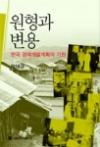
Park Tae Gyun
Seoul: Seoul National University Press, 2007
Reviewed by Jeong Jong-Ho, professor at the Graduate School of International Studies, Seoul National University.
This book traces the origin of the Economic Development Plans which were formulated and implemented in Korea between 1956 and 1964. The book is roughly divided into four parts. First, it analyzes the discourse of Korean intellectuals in the 1950’s on economic planning. The second part focuses on changes in the American strategy of aid for underdeveloped countries. The third part discusses the alterations in U.S. policy toward Korea, and American intervention in the political and social structure of Korea. The last part of the book inquires into the formulation and implementation of the Economic Development Plans from a historical perspective. The author shows how the discourse on Economic Development Plans in Korea and U.S. policy eventually shaped the character of the Economic Development Plan designed in 1956-1964.
Although it is usual for researchers to begin by investigating the First Economic Development Plan in 1962, this study, by contrast, traces a wide variety of factors which developed since the late 1950’s. Another distinguishing feature of this study is that it deals with international variables as well as the domestic variables involved in formulating and implementing the Economic Development Plan. In other words, the author gives an extensive account of various elements including political, social, military, and international situations. Most noteworthy, the book explains the formulation of the Korean Economic Development Plan by highlighting intellectual history.
In contrast to previous research that emphasized the colonial legacy and role of Korean economic policy makers and bureaucrats, this book stresses the fact that a social consensus about the economic development plan had already formed in Korea. By examining changes in U.S. policy as well as the influence of other Asian nations in the 1950’s, the author demonstrates that the impact on Korean society came not only from developed countries. Ultimately, the author insists that the Korean Economic Development Plans expressed localized characteristics that combined internal and external influences. As a result, this study is acknowledged as a great contribution to the academic world. Equally important, it is written in a simple style that is also accessible to a general readership.
